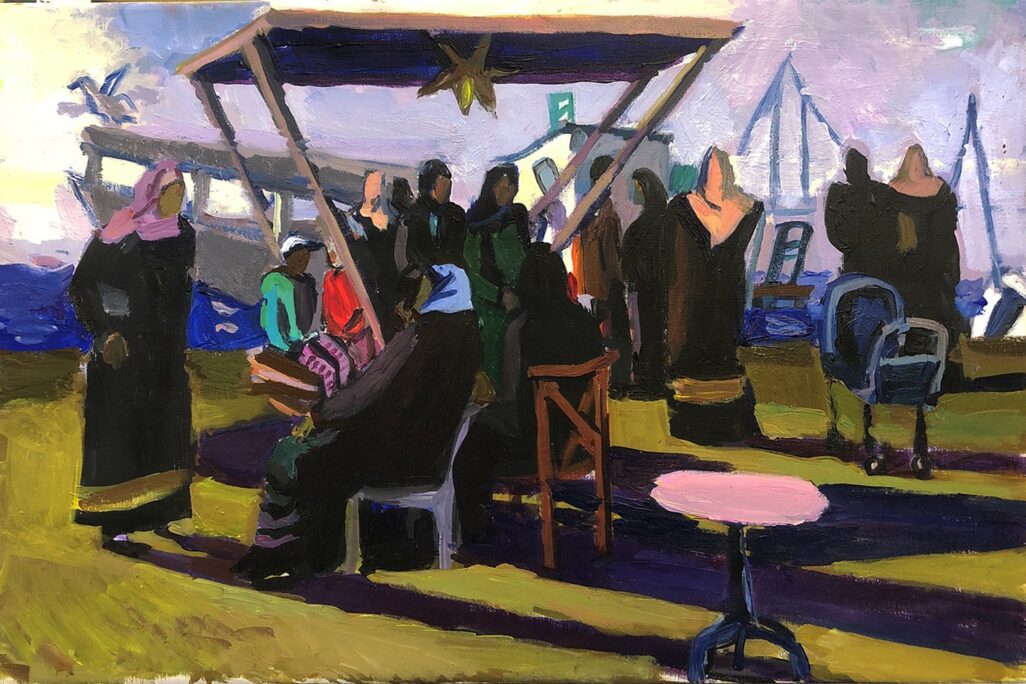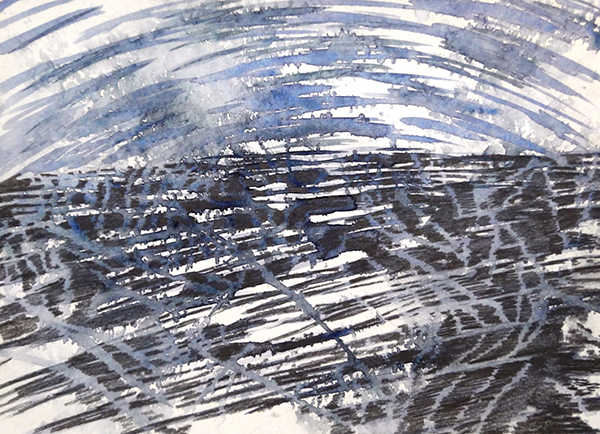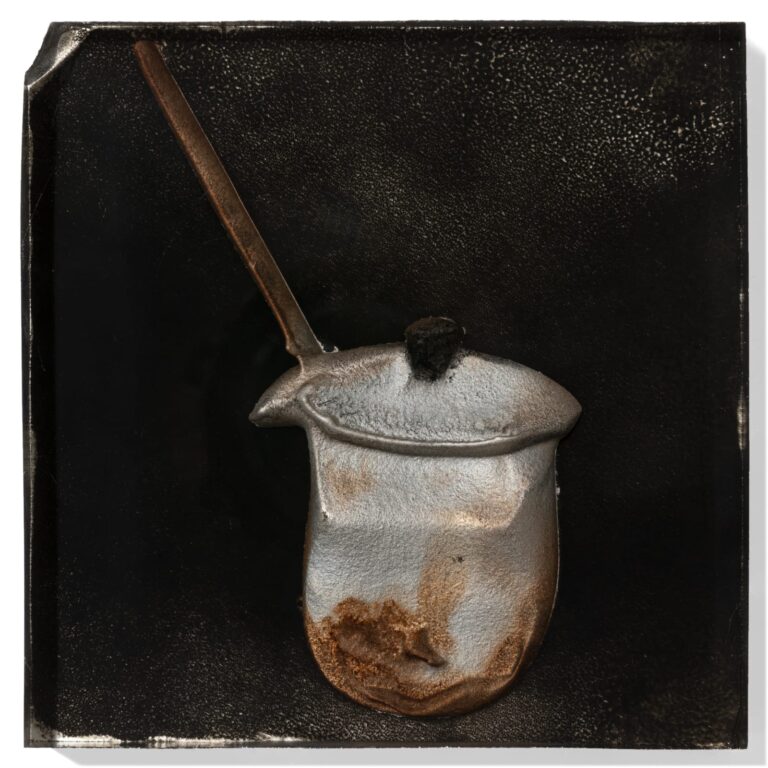
Last week, the Maya Gallery in Tel Aviv held its 17th annual Bread and Roses art exhibition to promote the integration of Arab women into the Israeli labor market. The annual exhibition, which presented the work of more than 400 artists, is a joint project of Sindyanna of Galilee, a non-profit organization and social business run by Arab and Jewish women, and the Workers Advice Center, better known as WAC-MAAN, a labor rights organization with a focus on Arab women’s employment.
“Seventeen years ago, we were a group of artists who wanted to use our art to promote social ideas and social change,” Danny Ben Simhon, who co-curates the exhibition with Sharon Lior, Leah Abir, Erez Wagner and Hagai Ulrich, told Davar. “We took the name Bread and Roses from the textile workers’ struggle in the United States in the 1920s. One of the organizers, Rose Schneiderman, coined this phrase when she said that the workers are entitled not only to bread and material well-being, but also to spiritual life, to roses.”
In 2005, when the exhibition was first held, the employment rate of Arab Israeli women was only about 17%. Today, that rate has more than doubled to 44% — but is still significantly lower than the 80% employment rate among Jewish Israeli women. “There is still a long way to go, but our exhibition puts at the forefront the issue of equal opportunities for Arab women, and their integration into the work world,” Ben Simhon explained.
The exhibition presents a broad array of artists, ranging from young people fresh out of art school to familiar names in the Israeli art world. “These are artists who choose to take part in this social act and to donate [the proceeds from] their works for social change. For us, art is a space for tolerance, for freedom to contain and to meet the different and diverse, and also to drive social change. For us, this exhibition is an example of what can be done together. It promotes the idea of combating racism, misogyny and homophobia,” Ben Simhon said.

Although the exhibition itself took place for only four days, the works will continue to be displayed and offered for sale at the exhibition site. The prices of the works range from 300 shekels ($85) to thousands of shekels.
“These women who live in the desert were like birds that want to fly”
The artist Natalia Zourabova has had her art featured in the Bread and Roses exhibition for more than a decade. This year, her featured painting depicts a group of Bedouin women whom she met a year and a half ago in the port of Jaffa. “These women who live in the desert, dressed in black, were very moved by the sight of the sea that they don’t get to access much. There was something about them that reminded me of the birds that want to fly, and it really moved me. I lived for many years in the Negev, in Be'er Sheva and the surrounding area, and I felt connected to these women. When I saw them, I immediately went over to them to talk to them and drew a sketch of them. There was something about meeting them that really touched me,” Zourabova said.
Zourabova is part of a group of Israeli artists from the former Soviet Union known as the New Barbizon. Their paintings are characterized by a direct encounter with their subjects and an examination of social issues. “In recent years, I have also brought works to the exhibition that relate to Arab women and their lives. Last year I presented a painting I drew of two Bedouin women with their goats,” Zourabova said.
“A cup of coffee at work emphasizes the importance of doing and creating”
Glass artist Shahd Zoabi has also exhibited her work in the Bread and Roses exhibition for many years, and was formerly involved in organizing the exhibition as well. “For me, this is also an opportunity to be part of this project that provides work to many women and has a significant social contribution. It’s also a project that gives a lot of exposure to artists, and it’s a springboard for many beginning artists. It’s an artistic collaboration of artists who help each other. Many of the women who were able to integrate into the labor force thanks to the money collected from the exhibition also take part and come to help set up the exhibition and hang the pictures,” Zoabi said.
Zoabi’s glass work is characterized by a distinctive set of techniques. “I grew up in Nazareth in a family glass work business and I took that with me to my art. My work includes engraving, painting and sculpting the glass. At the end of each job, I also do a burning ceremony of the glass and exposing the piece under the black soot of the fire,” she explained.

This year, the piece she brought to the exhibition depicts a ghalai, the Arabic word for the small pot for brewing coffee that Hebrew speakers often mistakenly call “finjan.” “The ghalai is a recurring motif in many of my works. The coffee is the beginning of the day. It is an object that gathers the people together around it. You can also find many types and models of ghalai — the one that appears in this work is one that characterizes workers and the importance of work. A cup of coffee at work is different from one you drink at home. It inspires you to work and emphasizes the importance of doing and creating. The piece is called 'Your time' — a break in the workday. A moment to be with yourself in the rush,” Zoabi said.
The organizations behind the exhibition
The labor rights organization WAC-MAAN, which emphasizes the rights of disadvantaged groups of workers, collaborated with Sindyanna of Galilee to put on the exhibition. Sindyanna of Galilee is a sustainable social business that produces environmentally friendly olive oil, with the aim of encouraging Jewish and Arab women's employment and creating a platform for cross-border empowerment and cooperation.
Sindyanna of Galilee operates a manufacturing plant in the Kfar Kanna industrial zone in northern Israel where it produces and packages olive oil along with local food products such as hyssop, honey, almonds, and carob syrup. Sindyanna of Galilee also operates a visitors center near the manufacturing plant, and in the past year the organization launched a new project to integrate hydroponic agriculture into the Arab education system.
Sindyanna of Galilee also recently established Breweries Without Borders, a project that brings together women and culinary professionals of all kinds. The profit from this project, as with all the organization’s profits, are invested in social ventures for the advancement of women and for bridging the gaps between Jewish and Arab society.
This article was translated from Hebrew by Leah Schwartz.






